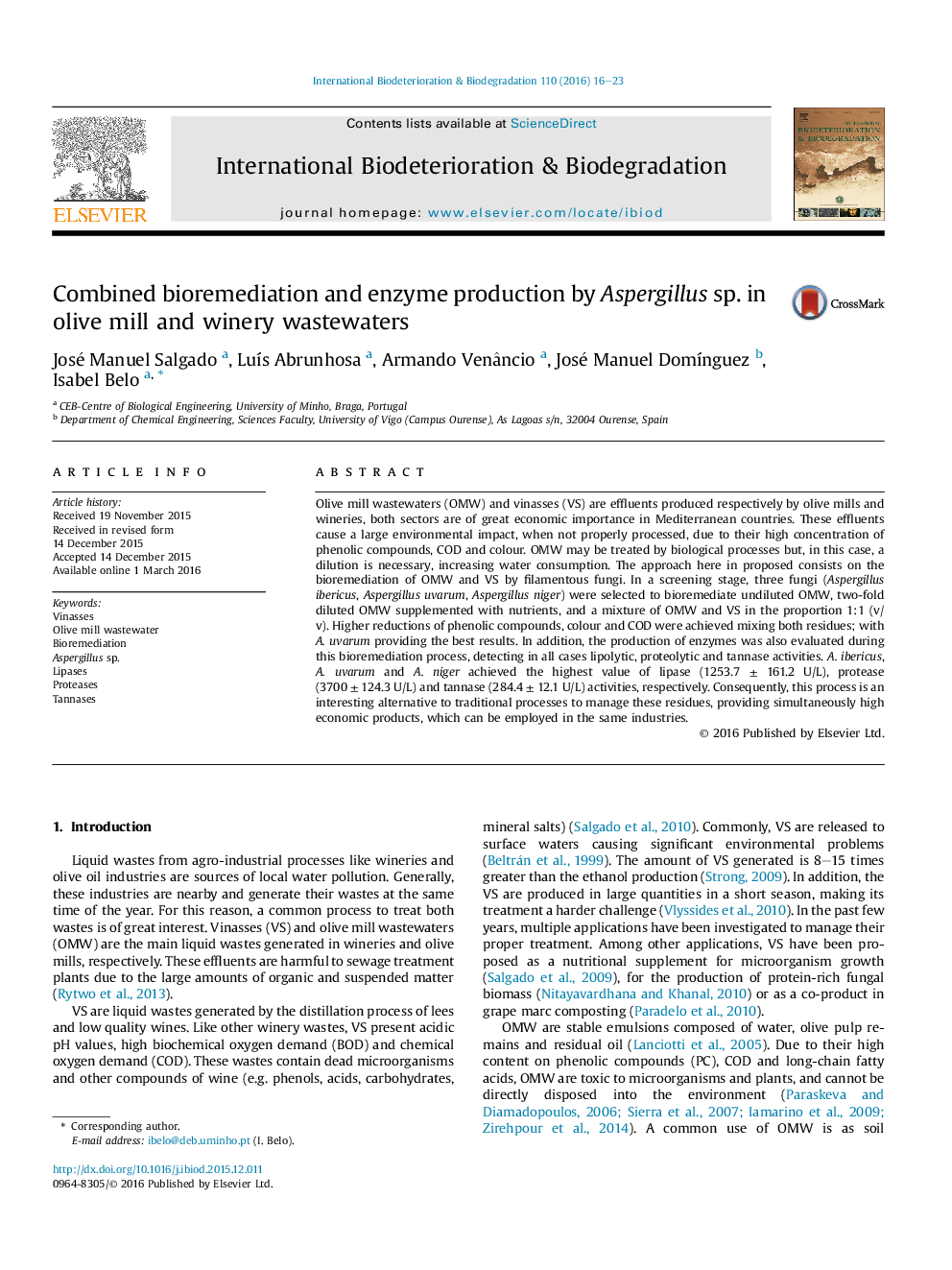| Article ID | Journal | Published Year | Pages | File Type |
|---|---|---|---|---|
| 4364193 | International Biodeterioration & Biodegradation | 2016 | 8 Pages |
•Detoxification of olive mill wastewater by fungi was not efficient.•Vinasses addition improved the detoxification of olive mill wastewater by fungi.•Aspergillus ibericus and Aspergillus uvarum can be used in bioremediation processes.•Lipases, proteases and tannases were produced in bioremediation processes.
Olive mill wastewaters (OMW) and vinasses (VS) are effluents produced respectively by olive mills and wineries, both sectors are of great economic importance in Mediterranean countries. These effluents cause a large environmental impact, when not properly processed, due to their high concentration of phenolic compounds, COD and colour. OMW may be treated by biological processes but, in this case, a dilution is necessary, increasing water consumption. The approach here in proposed consists on the bioremediation of OMW and VS by filamentous fungi. In a screening stage, three fungi (Aspergillus ibericus, Aspergillus uvarum, Aspergillus niger) were selected to bioremediate undiluted OMW, two-fold diluted OMW supplemented with nutrients, and a mixture of OMW and VS in the proportion 1:1 (v/v). Higher reductions of phenolic compounds, colour and COD were achieved mixing both residues; with A. uvarum providing the best results. In addition, the production of enzymes was also evaluated during this bioremediation process, detecting in all cases lipolytic, proteolytic and tannase activities. A. ibericus, A. uvarum and A. niger achieved the highest value of lipase (1253.7 ± 161.2 U/L), protease (3700 ± 124.3 U/L) and tannase (284.4 ± 12.1 U/L) activities, respectively. Consequently, this process is an interesting alternative to traditional processes to manage these residues, providing simultaneously high economic products, which can be employed in the same industries.
